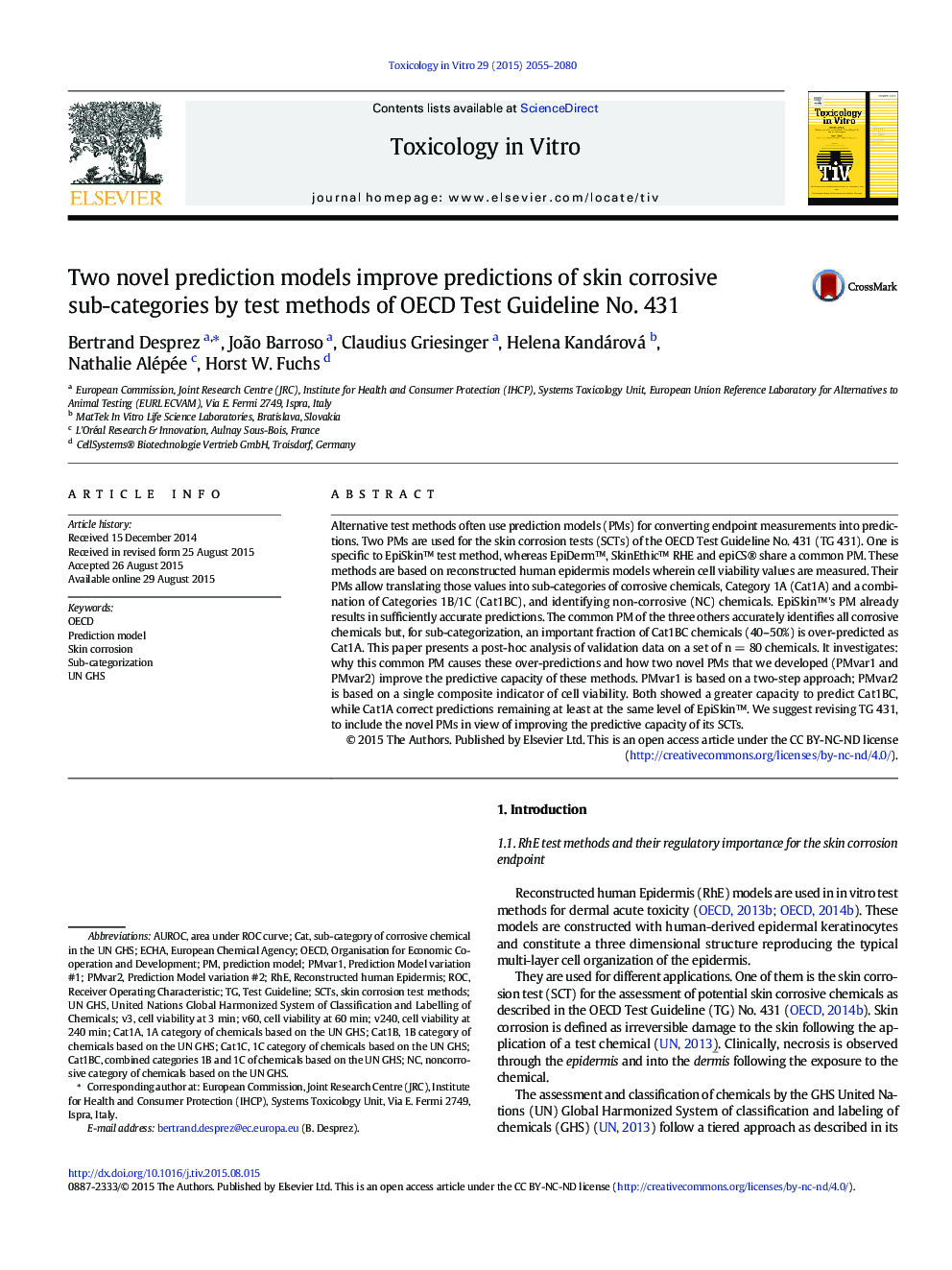| کد مقاله | کد نشریه | سال انتشار | مقاله انگلیسی | نسخه تمام متن |
|---|---|---|---|---|
| 5861333 | 1133758 | 2015 | 26 صفحه PDF | دانلود رایگان |

- We focus on the common prediction model of 3 in vitro skin corrosion tests.
- We investigate why this common prediction model over-predicts some corrosive chemicals.
- We investigate how this common prediction model can be improved.
- This improvement is performed according to two novel prediction models.
- We suggest revising OECD Test Guideline No. 431 accordingly.
Alternative test methods often use prediction models (PMs) for converting endpoint measurements into predictions. Two PMs are used for the skin corrosion tests (SCTs) of the OECD Test Guideline No. 431 (TG 431). One is specific to EpiSkin⢠test method, whereas EpiDermâ¢, SkinEthic⢠RHE and epiCS® share a common PM. These methods are based on reconstructed human epidermis models wherein cell viability values are measured. Their PMs allow translating those values into sub-categories of corrosive chemicals, Category 1A (Cat1A) and a combination of Categories 1B/1C (Cat1BC), and identifying non-corrosive (NC) chemicals. EpiSkinâ¢'s PM already results in sufficiently accurate predictions. The common PM of the three others accurately identifies all corrosive chemicals but, for sub-categorization, an important fraction of Cat1BC chemicals (40-50%) is over-predicted as Cat1A. This paper presents a post-hoc analysis of validation data on a set of n = 80 chemicals. It investigates: why this common PM causes these over-predictions and how two novel PMs that we developed (PMvar1 and PMvar2) improve the predictive capacity of these methods. PMvar1 is based on a two-step approach; PMvar2 is based on a single composite indicator of cell viability. Both showed a greater capacity to predict Cat1BC, while Cat1A correct predictions remaining at least at the same level of EpiSkinâ¢. We suggest revising TG 431, to include the novel PMs in view of improving the predictive capacity of its SCTs.
Journal: Toxicology in Vitro - Volume 29, Issue 8, December 2015, Pages 2055-2080